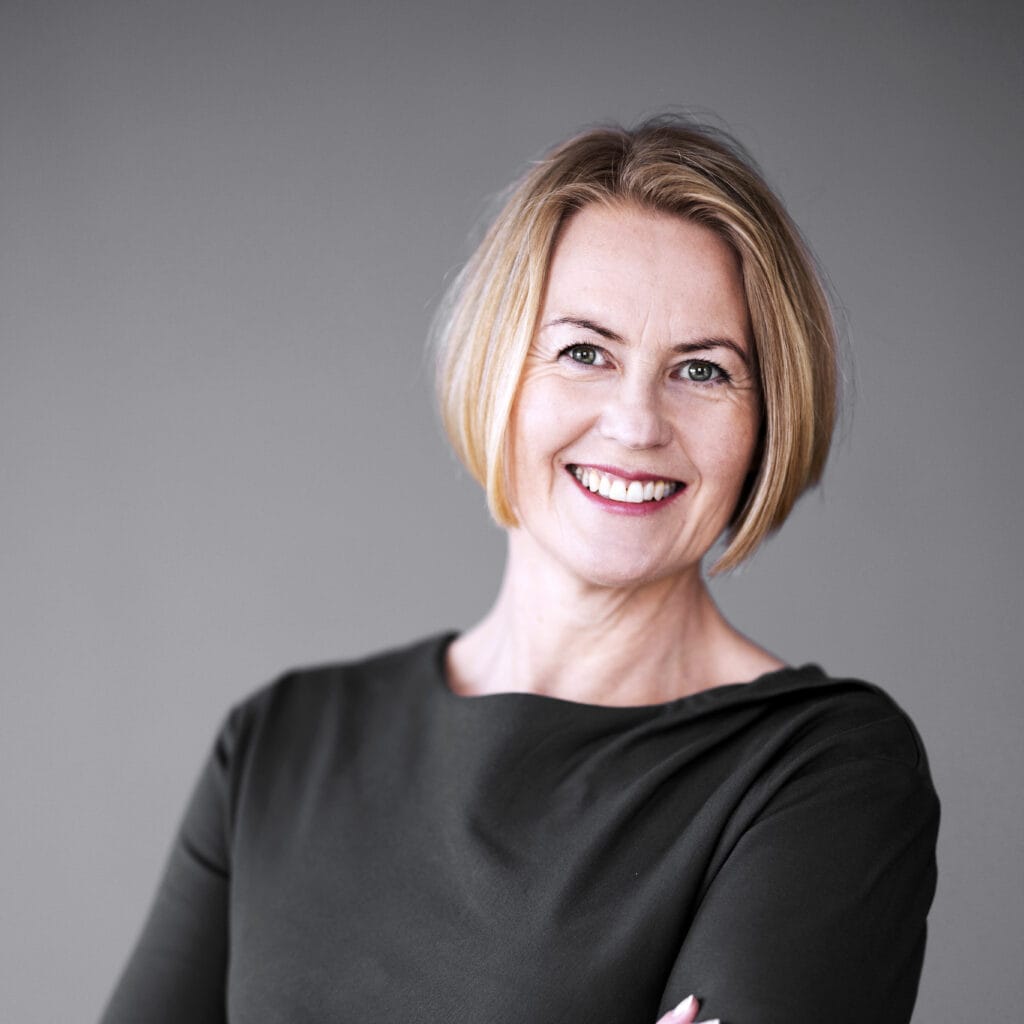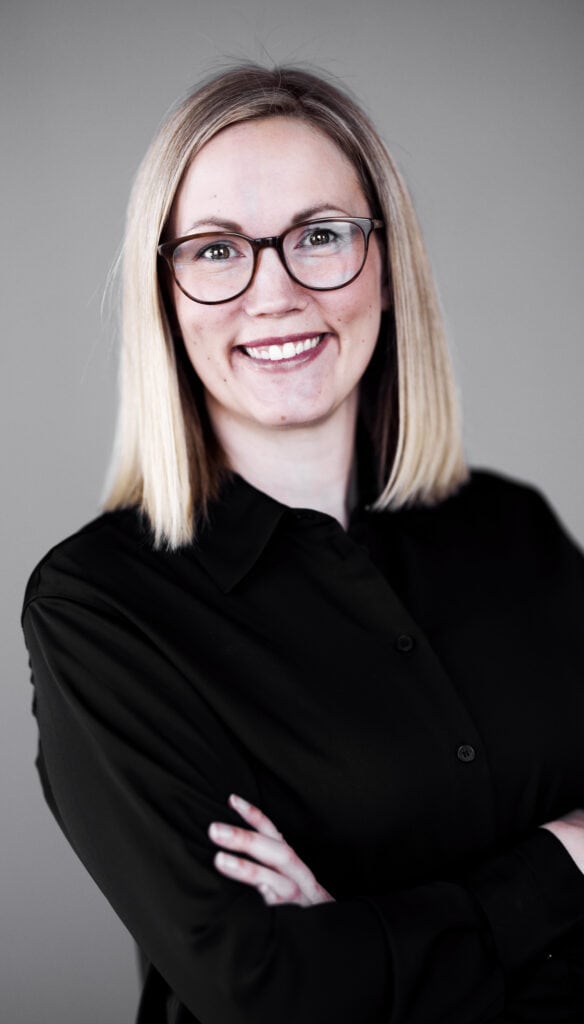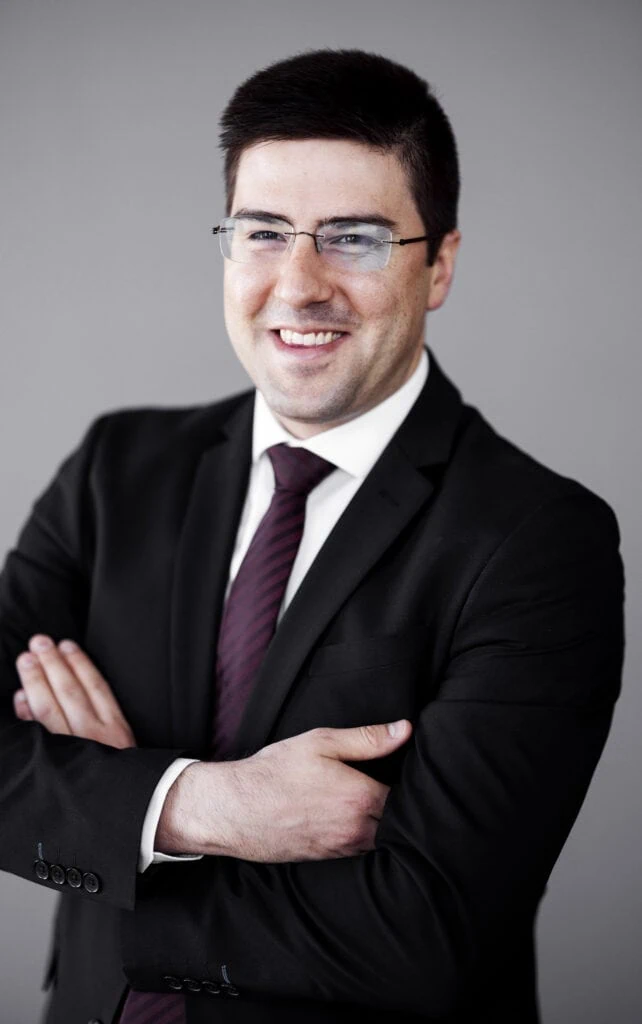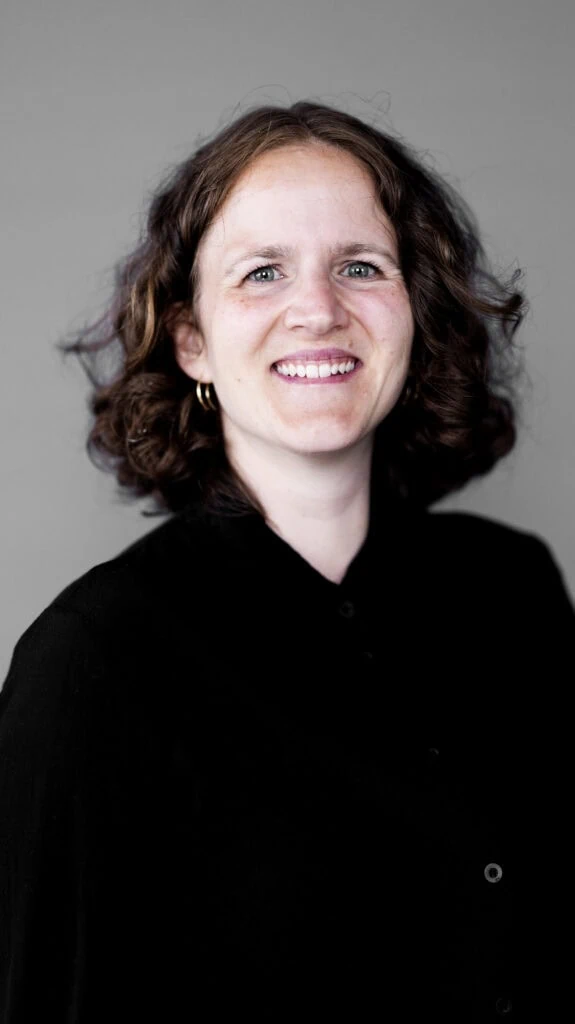Protecting your identity
Trademarks
Trademarks are the distinctive signs of a business. Protect your trademarks by applying for registration for brand names, logos, slogans, or distinctive sounds and animations associated with your company or product.
A registered trademark provides documented exclusive rights to use the mark as a distinctive sign for the goods and services for which it is registered. This exclusivity can be enforced and commercially utilised.
With you every step of the way
We offer services tailored to the needs and desires of both small and large clients. Our goal is to make the registration process secure, straightforward, and cost-effective for you.
We offer a comprehensive range of services, including strategic advice, preliminary searches, preparation of national and international trademark applications, renewal of registrations, assistance with opposition and appeal cases, consent negotiations, complaints about company names, and more.

Reidun Rosså Korsberg
Applying for trademark protection
Secure your competitive edge
A trademark is a crucial marketing tool, and a well-established trademark provides a significant competitive advantage.
Registering a trademark gives you documented exclusive rights. Without such exclusivity, you may face numerous challenges. For example, competitors could use marks that are confusingly similar to yours, or someone might seek rights to a mark that you have already used but not registered. This could pose problems if you wish to expand your activities geographically.
Trademark registration is the most effective way to defend yourself, as a registered trademark prevents others from using similar marks. To protect yourself from competitors or to allow others to use your trademark for a fee (licensing), you should register your trademarks.
Protecting your trademark is a cost-effective way to secure the value you and your business create.

"A brand for a company is like a reputation for a person. You earn reputation by trying to do hard things well."
Jeff Bezos, founder and executive chairman of Amazon
What is a trademark?
A trademark is a distinctive sign used by a company or individuals to identify themselves and their products or services to customers.
A trademark that is to be registered must be suitable for distinguishing the holder's goods and services from those of others. This means the mark must have distinctive characteristics that make it recognisable as someone’s mark. Additionally, the mark cannot describe the goods or services for which it is to be registered.
Types of trademarks
Word mark
A word mark is a trademark consisting of letters and/or numbers and may be an abbreviation, a single word or name, a slogan, or a sentence, such as JUST DO IT®.
The word mark may be a fanciful term, or it may use familiar words that have no special meaning concerning the goods or services for which it is used, such as M44®, KVADRAT®, APPLE®, or KIWI®.
Collective and responsibility marks
Collective marks are trademarks registered in the trademark register and are intended for use by, for example, an association or a group of producers. They can also take the form of a certification mark. A collective mark registration must include a set of rules governing the use of the mark.
Responsibility marks are used by importers and producers of gold, silver, and platinum items to identify the product's origin and must be used in addition to a fineness mark.
Figurative and combined marks
Figurative marks are trademarks that consist of graphics (pure figurative marks) or a combination of words and graphics (combined marks). Figurative marks can be in black and white or color.
While word marks and figurative marks are the most common types of trademarks, it is possible to obtain exclusive rights to other types of marks, especially three-dimensional marks, sound marks, and position marks.
Slogans
Slogans are trademarks consisting of multiple words. An example is BJØRNSON BUILDING PEOPLE BUILDS BUSINESS®
Our knowledge, your peace of mind
Comprehensive IP solutions delivered with professionalism and genuine care.
Since our founding in 1950, our deep understanding of intellectual property law has been the cornerstone of our commitment to safeguarding your innovations.
Our team of dedicated professionals provide tailored IP services that not only protect your assets but also enhance their value. From securing patents and trademarks to navigating complex international regulations, we guide you through every step of the process with clarity and confidence.
With our expertise, you can focus on what you do best—innovating—while we ensure your intellectual property is protected with the highest standards of professionalism and care.

Useful information on trademarks
Explore our Knowledge Base
Requirements for registering a trademark
Descriptive Marks
Trademarks that are to be registered must not directly and specifically describe the goods or services they are meant to represent. Descriptive text or figures will not be perceived as a unique identifier, as others may need to use the same or similar words and images in marketing their goods and services. Descriptive trademarks lack the distinctiveness required by trademark law.
Example 1: It is possible to register the trademark APPLE® for computers but not for fruit, as "apple" is the English word for the fruit and would simply describe it.
Example 2: It is not possible to register the trademark STAVANGER CAR CARE for car wash services, as it merely indicates the location (Stavanger) and the type of service (car care). However, if you add a logo that does more than just describe the car wash service and is distinctive, you may be able to secure exclusive rights to the mark as a combined mark.
Confusingly similar trademarks
It is not possible to register a trademark that may be confused with already registered trademarks, unless consent is obtained from the existing trademark holder.
The Norwegian Industrial Property Office will always assess a new application against the existing applications and registrations in the Norwegian trademark register. If there is a risk that potential buyers of the goods or services may confuse the trademarks or assume a connection between the owner of the new trademark and the older one, the application will be refused.
Example: It is not possible to register B-TIME if someone has already registered BTIME for the same goods and services.
Other grounds for refusal
While lack of distinctiveness and confusingly similar trademarks are the most common reasons for refusal, there are other grounds for rejection as well. For example, a trademark must not be misleading regarding its geographic origin, and it must not be offensive. Additionally, it is not permitted to register the Norwegian national flag as a trademark without the consent of the state, although you may still use the flag in marketing your goods and services.
If you need help assessing whether your trademark is registrable, please contact us for a non-binding evaluation.
Which trademarks can be registered?
Word marks, figurative marks, and combined marks are the most commonly used and registered trademarks. However, it is also possible to register many other types of trademarks, such as motion marks, color marks, holograms, sound marks, multimedia marks, patterns, position marks, and three-dimensional marks.
Word mark
A word mark is a trademark consisting of letters and/or numbers and may be an abbreviation, a single word or name, a slogan, or a sentence, such as JUST DO IT®. The word mark may be a fanciful term, or it may use familiar words that have no special meaning concerning the goods or services for which it is used, such as M44®, KVADRAT®, APPLE®, or KIWI®.
Figurative and combined marks
Figurative marks are trademarks that consist of graphics (pure figurative marks) or a combination of words and graphics (combined marks). Figurative marks can be in black and white or color. While word marks and figurative marks are the most common types of trademarks, it is possible to obtain exclusive rights to other types of marks, especially three-dimensional marks, sound marks, and position marks.
Collective, guarantee, certification, and responsibility marks
Collective marks are trademarks registered in the trademark register and intended for use by, for example, an association or a group of producers. Collective marks can also be suitable for public entities.
Guarantee marks and certification marks indicate that a good or service complies with specific requirements, such as quality, production method, or material.
Responsibility marks are used by importers and producers of gold, silver, and platinum items to identify the product's origin and must be used in addition to a fineness mark.
An application for the registration of collective marks, guarantee marks, and certification marks must include rules for the use of the mark.
Other marks
In addition to words, shapes, and combinations of these, a range of other types of marks can be registered as long as they meet the trademark authorities' requirements for distinctiveness. Examples of such marks include motion marks, color marks (pure colors or combinations), hologram marks, sound marks, multimedia marks, pattern marks (repeating patterns), position marks (protecting a mark on a specific area of a product), and three-dimensional marks.
List of goods and services
The goods and services in the application are organised according to an international classification system called the "Nice Classification." When a trademark is registered, you gain exclusive rights to use the mark for the selected goods and services. This exclusivity also provides protection for the mark concerning goods and services that are considered similar to those for which your mark is registered.
The list of goods and services cannot be expanded after the application has been submitted. Therefore, it is important to submit an application with a list of goods and services that meets your current needs and those for the years ahead.
We can assist you in preparing a list of goods and services tailored to your needs.
Preliminary search
A preliminary search is a strategic tool that provides a quick and confidential assessment of potential obstacles to the registration of your trademark.
A preliminary search can also be a valuable tool for evaluating whether you or a competitor are encroaching on each other's territory before considering legal action.
Get in touch, and we can assist you with preliminary searches and strategies to protect your trademarks.
Duration and use requirement
Håmsø Patentbyrå monitors the renewal deadlines for the trademark registrations we represent and will send a notification to our contact for the right when the renewal period is approaching.
We also remind our clients when it is time for renewal.
A registered trademark must be used for the goods/services covered by the registration; otherwise, third parties may request the registration be cancelled due to non-use. A registration cannot be cancelled if the holder can demonstrate genuine use of the mark as registered within the last 5 years (Norway).
What do ™ and ® mean?
TM (trade mark) can be used by anyone, as it does not indicate a registered right. Although the symbol does not signify a registered right, it sends a signal to the market that it is intended to be perceived as someone's distinctive mark.
The ® symbol (registered trademark) is the international symbol for a registered trademark. A registered trademark has legal protection according to the trademark laws of the country where it is registered and within the selected categories of goods and services.
Using the ® symbol without a registered right may constitute a violation of the norwegian Marketing Act.
Examples of registered trademarks include ERLING HAALAND®, DYSON®, ULLRIGG®, SKEIE®, and INOIQ®.
Use requirement
However, if the trademark is not used for all the goods and services it is registered for, others may file a request to have the registration removed from the trademark register for those goods or services that it has not been used for. The requirement to use the trademark begins only after five years of registration.
We recommend registering trademarks for the goods and/or services you are already using the trademark for or plan to use it for within the next 3-5 years.
It is also important to retain documentation that proves the trademark is actually in use, such as marketing materials, invoices, and other dated documents showing your mark in use. This can be useful if someone requests the cancellation of your registered trademark.
Priority rule
If you apply for trademark protection in other countries within six months from this first filing, you can claim to retain the same priority date as your Norwegian application. Your trademark will then be protected from that date and have priority over a similar trademark that is applied for at a later date.
Trademark protection abroad
EU trademark
The EU has a common register of trademarks that are valid in all member states. An EU trademark is called an EUTM. Additionally, each member state and the Benelux region have their own national registers, which can be used if an EU registration is not possible or suitable for you.
Norway has an agreement with the EU Intellectual Property Office (EUIPO) that allows Norwegians to apply for registration directly in the EU without needing a representative with an address within the EU. An EU application does not depend on a Norwegian base registration, making it a good option if you do not have trademark rights in Norway or do not need to register your mark in countries outside the EU.
If you plan to offer your goods and services in markets beyond Norway and the EU, we recommend using the Madrid Protocol— see the separate section on this arrangement.
Håmsø can help you determine the best strategy for international protection for your business.
What is the Madrid Protocol?
The main principle of the system is that a trademark application or registration submitted in one of the member countries can also be applied for in other member countries.
As a Norwegian applicant, you must have a national application or registration as a basis before applying internationally via the Madrid Protocol.
The international registration depends on the national base application/registration for five years. If your Norwegian application is not registered, or if your registration is cancelled within five years, the international registration will also be cancelled.
To benefit from the priority rule, you must apply within six months from the date you submitted the Norwegian application.
We can help you determine which international application method is best suited for your situation.
Highly trusted, client-focused
Our international team of attorneys have a wide range of technical backgrounds and solid experience in a number of scientific fields. We have many years of experience in both private practice and in-house IPR departments of large multinational organisations.
Meet our team


